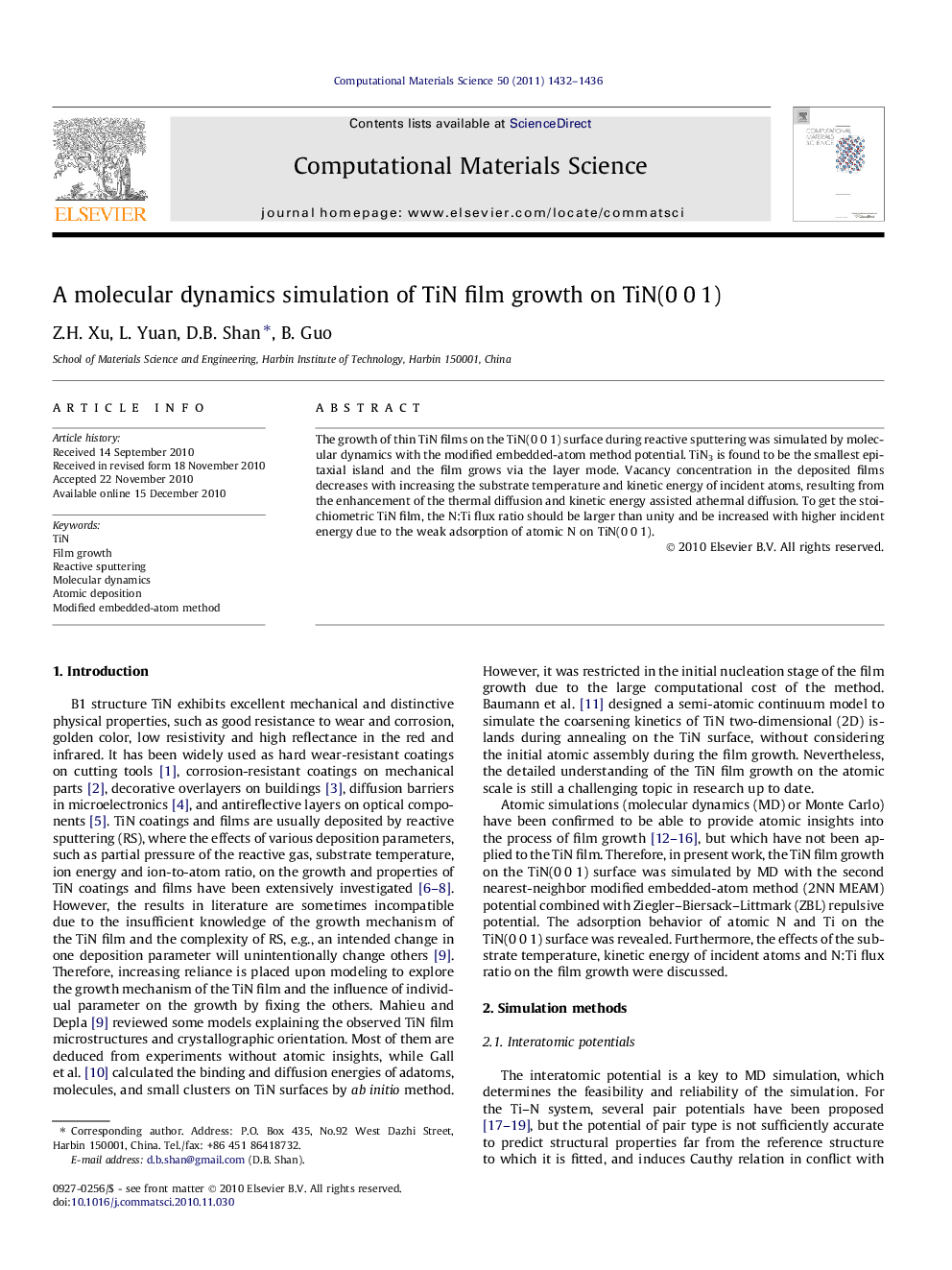| Article ID | Journal | Published Year | Pages | File Type |
|---|---|---|---|---|
| 1562160 | Computational Materials Science | 2011 | 5 Pages |
The growth of thin TiN films on the TiN(0 0 1) surface during reactive sputtering was simulated by molecular dynamics with the modified embedded-atom method potential. TiN3 is found to be the smallest epitaxial island and the film grows via the layer mode. Vacancy concentration in the deposited films decreases with increasing the substrate temperature and kinetic energy of incident atoms, resulting from the enhancement of the thermal diffusion and kinetic energy assisted athermal diffusion. To get the stoichiometric TiN film, the N:Ti flux ratio should be larger than unity and be increased with higher incident energy due to the weak adsorption of atomic N on TiN(0 0 1).
Research highlights▸ TiN film grows on TiN(0 0 1) via the layer mode. ▸ TiN3 is the smallest epitaxial island. ▸ Vacancy concentration in the deposited films decreases with increasing the substrate temperature and kinetic energy of incident atoms. ▸ The N:Ti flux ratio should be larger than unity and be increased with the increasing incident energy to get the stoichiometric TiN film.
